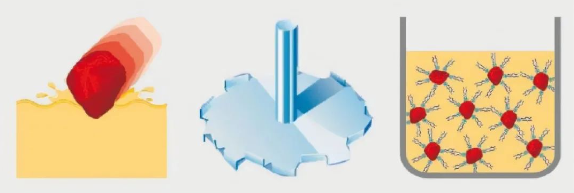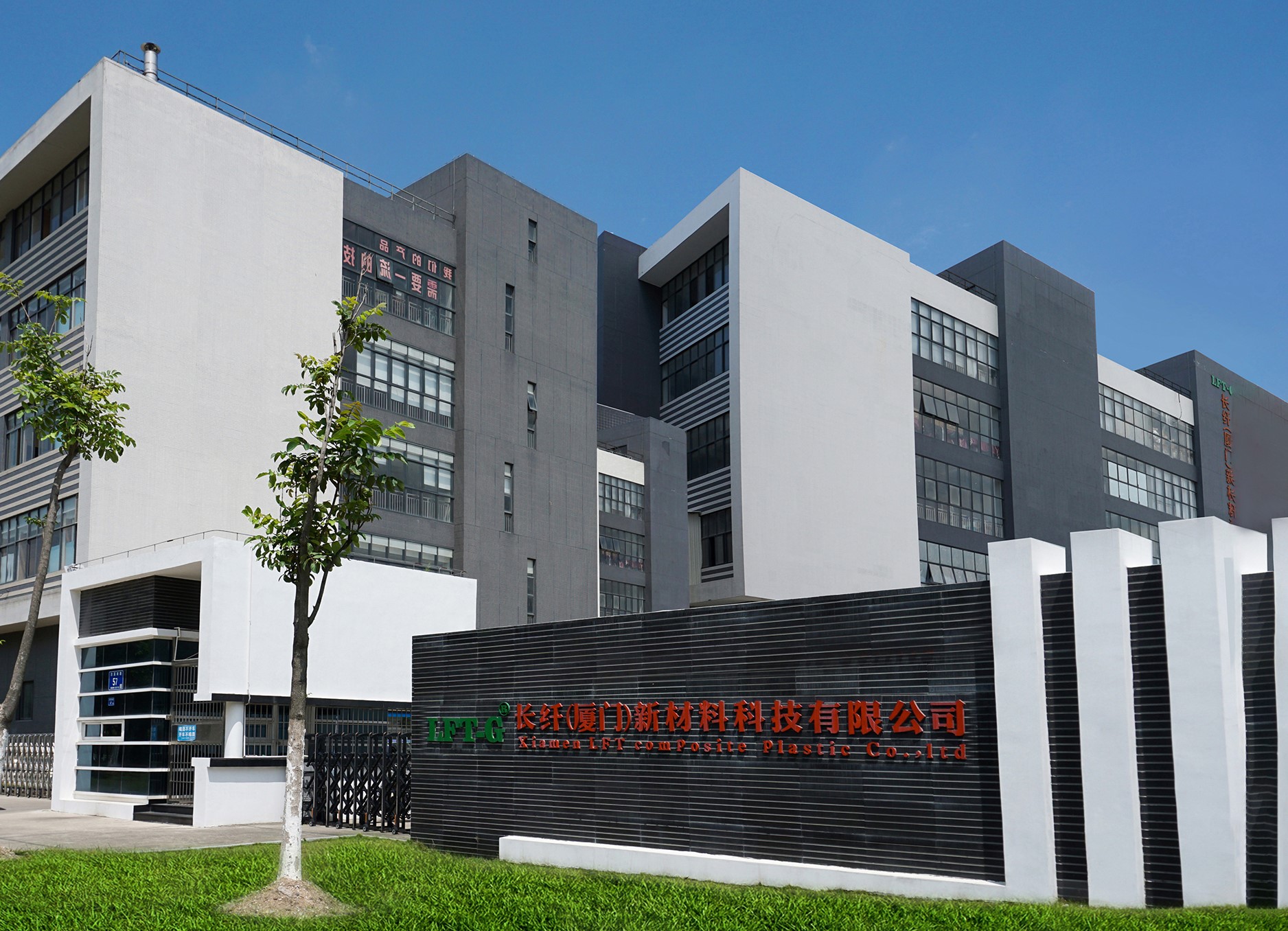neuer Blog
Änderungsprinzip
Modifizierte Kunststoffe beziehen sich auf Kunststoffe, die auf der Grundlage allgemeiner Kunststoffe und technischer Kunststoffe durch Füllen, Mischen, Verstärken und andere Methoden verarbeitet und modifiziert werden, um die Eigenschaften von Flammschutzmittel, Festigkeit, Schlagzähigkeit, Zähigkeit und anderen Aspekten zu verbessern. Bei der Modifizierung geht es um den Zusatz des Kunststoffs, den Dispersionszustand des Füllmaterials im modifizierten Kunststoff und dessen Entstehung. Auch das Füllmaterial hat einen großen Einfluss auf die Struktur der Harzschnittstelle, genau wie die Zugabe von Sand und Kies zu Beton. Die Verteilung des Füllmaterials wird weiter unten besprochen.
Dispersierter Zustand
1. Wenn der Polymerschmelze anorganische Partikel zugesetzt werden, kann es zu drei Arten der Dispersionsmikrostruktur anorganischer Partikel kommen. â Der zweite Aggregationszustand, dieser Dispersionszustand, hat einen guten Verbesserungseffekt. (2) Der unregelmäßige Dispersionszustand, einige in Gruppen zusammengefasst, andere existieren in Form individueller Dispersion. Diese Dispersion wird weder verstärkt noch verfestigt. ⢠Gleichmäßig im Matrixharz verteilt. Unabhängig davon, ob eine gute Grenzfläche zwischen dem Partikel und dem Matrixharz besteht, tritt in diesem Fall ein gewisser Verstärkungs- und Zähigkeitseffekt auf. Um verstärkte und zähe füllstoffmodifizierte Kunststoffe zu erhalten, hofft man, dass der dritte Dispersionszustand verfügbar ist.

Tauch-, Rühr- und Dispergierverfahren
2. Ob das anorganische pulverförmige Füllmaterial einzeln gleichmäßig im Matrixharz dispergiert werden kann, hängt von einer Vielzahl von Faktoren ab. Bei festen Verarbeitungsbedingungen ist es aufgrund der erwarteten Wirkung der Füllungsmodifikation umso besser, je kleiner die anorganische Partikelgröße ist. Aber je kleiner die Größe, je höher die Oberflächenenergie, desto stärker die Selbstkoagulationsfähigkeit und desto schwieriger ist eine gleichmäßige Verteilung. Der Effekt der „Agglomeration“ entsteht durch die Oberflächenenergie und die statische Elektrizität, die durch die Kollision und Reibung von Hochgeschwindigkeitsbewegungen erzeugt werden. Diese Art von Kondensat kann bei der anschließenden Misch- und Formverarbeitung nicht mehr durch mechanische Scherkräfte geöffnet werden, so dass der zweite unregelmäßige Dispersionszustand bei modifizierten Kunststoffen am schwersten als der „weiße Fleck“ sichtbar ist.
Verpackter Zustand
Pulvergranulat ist der Dispersionszustand des Füllmaterials, dessen Länge-Durchmesser-Verhältnis ungefähr 1 beträgt, und das Füllmaterial mit relativ großem Länge-Durchmesser bezieht sich auf das kurze faserige, nadelartige und dünne Blattfüllmaterial. Fasermaterialien haben eine gute Verfestigungswirkung, aber die meisten Faserfüllmaterialien haben einen hohen Preis und einen schlechten Umweltschutz. Die Massenproduktion von Calciumcarbonat-Fasern (Whisker) könnte diese Situation ändern, und der Whisker mit großer Länge kann sogar den Papierfaseranteil für die Papierindustrie reduzieren.
Geänderter Antrag
Mit überlegenem Preis-Leistungs-Verhältnis werden modifizierte Kunststoffe in immer mehr nachgelagerten Bereichen eingesetzt. Man kann sagen, dass modifizierte Kunststoffe zu einem Konsumtrend geworden sind, und die folgenden fünf Faktoren sind für diesen Trend verantwortlich:
Hohe Leistung: Modifizierte Kunststoffe bieten nicht nur die Vorteile herkömmlicher Kunststoffe wie geringe Dichte und Korrosionsbeständigkeit, sondern auch gute physikalische und mechanische Eigenschaften wie hohe Festigkeit, hohe Zähigkeit, hohe Schlagfestigkeit, Verschleißfestigkeit und Erdbebensicherheit. Darüber hinaus bietet die Verbesserung der Gesamtleistung von Kunststoffen eine Grundlage für ihre breite Anwendung im Downstream-Bereich.
Geringe Kosten: Im Vergleich zu anderen Materialien profitieren Kunststoffe von den Vorteilen einer hohen Produktionseffizienz und einer geringen Dichte und sind kostengünstiger. Die Kosten pro Volumeneinheit betragen bei Kunststoff nur etwa ein Zehntel der Kosten bei Metall.
Regierungspolitik: China hat das obligatorische Zertifizierungssystem „3C“ eingeführt, das die Sicherheitsleistung der im Katalog aufgeführten Produkte streng festlegt und so die breite Anwendung flammhemmender Kunststoffe in Haushaltsgeräten, IT, Kommunikation und anderen Bereichen fördert Felder.
Verbesserung des Verbrauchs: Mit der Verbesserung des Lebensstandards beginnen die Menschen, eine bessere Produktleistung anzustreben, und fordern, dass Geräte und andere Produkte schöner, sicherer und langlebiger sind, um höhere Anforderungen an die vorgelagerte Kunststoffindustrie zu stellen und diese zu erfüllen bessere Verarbeitungsleistung, mechanische Eigenschaften, Haltbarkeit und Sicherheit.
Technische Faktoren: Weltweit wurden mehr als 1000 Arten von Polymeren entdeckt, aber nur wenige Dutzend haben einen echten Anwendungswert. Die Entwicklung neuer Polymere erfordert nicht nur enorme Investitionen, sondern hat auch ungewisse Anwendungsaussichten. Im Gegenteil, die Modifizierungstechnologie kann nicht nur die Eigenschaften vorhandener Polymere verbessern, um den Anforderungen der Industrie gerecht zu werden, sondern auch die Kosten einiger hochpreisiger technischer Kunststoffe senken und so zu einer wirksamen Möglichkeit zur Entwicklung der Kunststoffindustrie werden.
Härteindex
Der Trend „Stahl durch Kunststoff zu ersetzen“ ist in vielen Branchen zu beobachten, und die Härte ist der wichtigste Indikator. Härte bezieht sich auf die Fähigkeit eines Materials, dem Eindrücken anderer härterer Objekte in seine Oberfläche zu widerstehen. Zur Angabe der Härte werden üblicherweise mehrere Methoden verwendet:
A. Shore-Härte
B. Rockwell-Härte
c, Mohs-Härte
Das Hinzufügen von Härte zu modifizierten Kunststoffen bezieht sich auf eine Modifizierungsmethode zum Hinzufügen harter Additive zu Kunststoffen. Der am häufigsten verwendete Härtefüller ist ein starrer anorganischer Füllstoff und eine Faser.
(1) Fügen Sie einen starren anorganischen Füllstoff hinzu
Oberflächenbehandlung verbessert die Härte von Kunststoffen
Die Methode zur Verbesserung der Oberflächenhärte von Kunststoff bezieht sich auf die Verbesserung der Härte der Außenfläche von Kunststoffprodukten, während die Härte der inneren Produkte unverändert bleibt. Dies ist eine kostengünstige Methode zur Härteverbesserung.
Diese Modifikationsmethode wird hauptsächlich für Muscheln, Dekorationsmaterialien, optische Materialien und Dinge des täglichen Bedarfs verwendet. Diese Modifikationsmethode umfasst hauptsächlich Beschichtung, Beschichtung und Oberflächenbehandlung.
(2) Durch Mischen wird die Härte von Kunststoffen verbessert
Die verbesserte Methode der Kunststoffmischung besteht darin, Harz mit hoher Härte mit Harz mit niedriger Härte zu mischen – um die Gesamthärte zu verbessern. Übliche Mischungen sind PS, PMMA, ABS und MF usw., und die Harze, die modifiziert werden müssen, sind hauptsächlich PE, PA, PTFE und PP.
(3) die Härte von Verbundkunststoffen
Die Methode zur Verbesserung der Härte von Kunststoffverbundwerkstoffen besteht darin, eine Schicht aus Härteharz auf die Oberfläche von Kunststoffprodukten mit geringer Härte aufzutragen. Dieses Verfahren eignet sich hauptsächlich für extrudierte Produkte wie Platten, Folien, Folien und Rohre. Die am häufigsten verwendeten Verbundharze sind PS, PMMA, ABS und MF.

Xiamen LFT Verbundkunststoff Co., Ltd.ist ein Markenunternehmen, das sich auf LFT&LFT konzentriert. Long Glass Fiber Series (LGF) und Long Carbon Fiber Series (LCF). Der thermoplastische LFT des Unternehmens kann für das Spritzgießen und Extrudieren von LFT-G sowie für das Formen von LFT-D verwendet werden. Es kann nach Kundenwunsch hergestellt werden: 5 bis 25 mm lang. Die durch Langfaser-Endlosinfiltration verstärkten Thermoplaste des Unternehmens haben die Systemzertifizierung ISO9001 und 16949 bestanden und die Produkte haben zahlreiche nationale Marken und Patente erhalten.